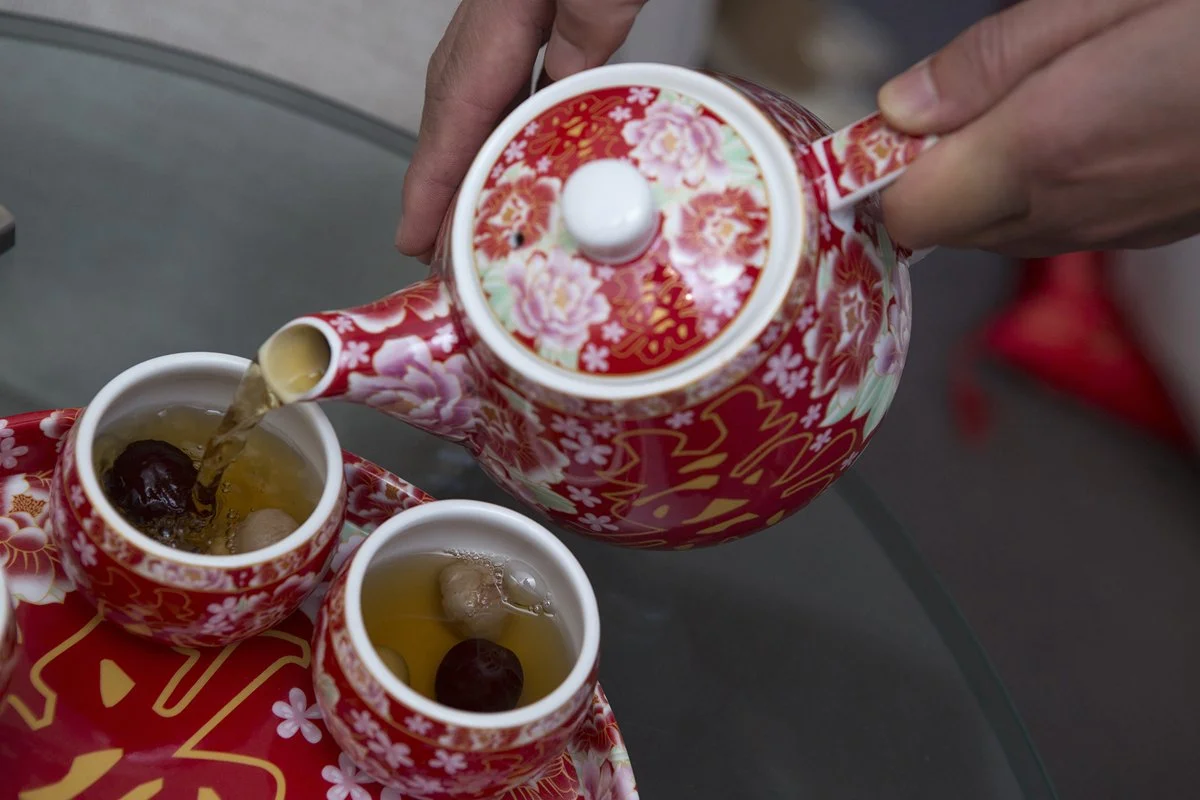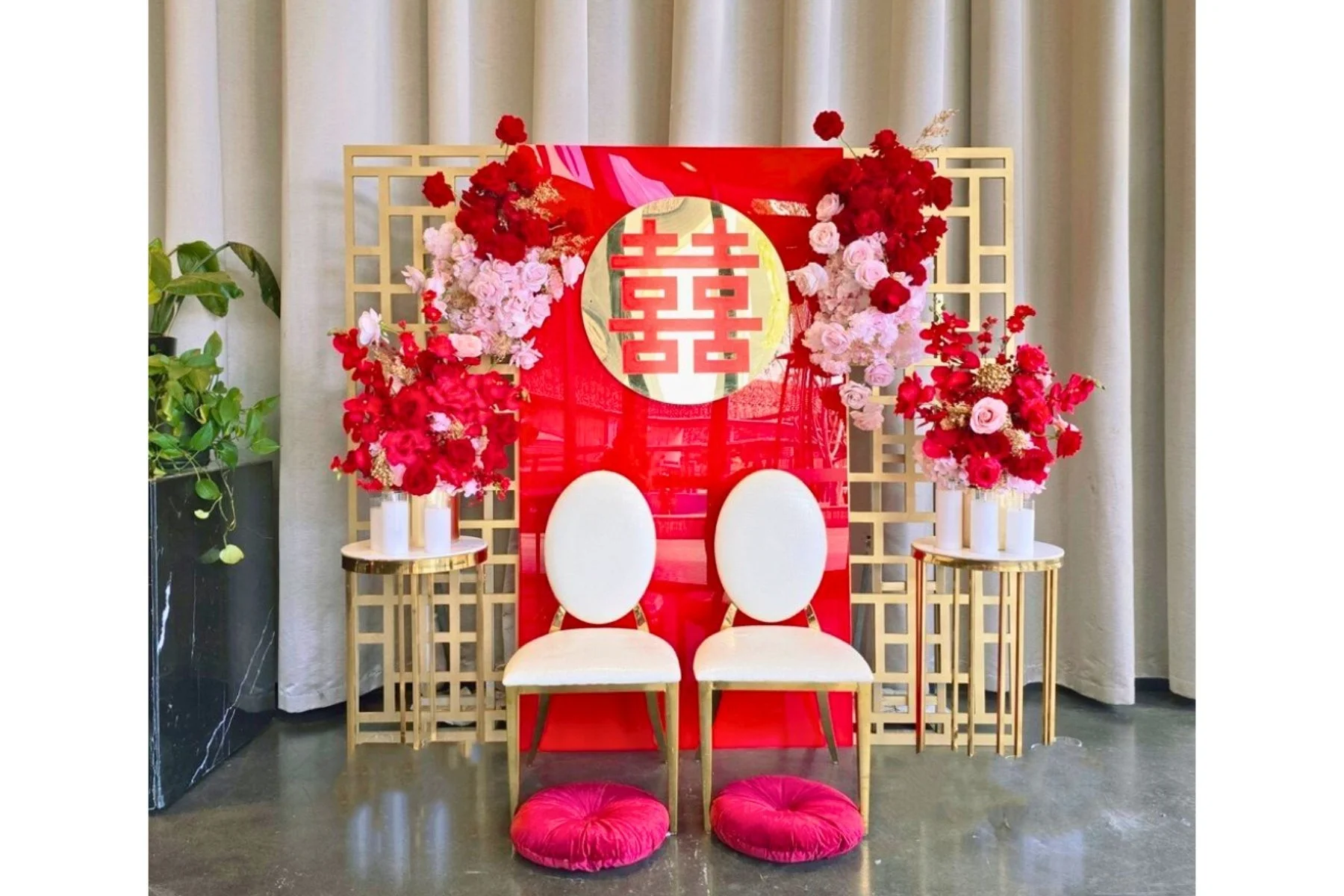A guide to a seamless tea ceremony wedding in Sydney
The tea ceremony is one of the most meaningful and beautiful traditions in East and Southeast Asia. It's a moment to honour family, show gratitude, and blend generations through a shared ritual. As more multicultural couples plan their weddings in Sydney, the challenge becomes: how do you keep the essence of the tea ceremony while blending it into a modern wedding day?
As a wedding planner in Sydney (who is also of Southeast Asian background), I help couples navigate this with ease—preserving cultural heritage while keeping the flow of the day seamless and stress-free.
Whether you're planning a stand-alone ceremony or incorporating it into your wedding timeline, here's everything you need to know.
What happens in a traditional tea ceremony?
The tea ceremony is a formal act of paying respect to the couple’s elders—parents, grandparents, aunts, uncles, and other family members. It's deeply symbolic and usually takes place before a Western ceremony or celebration.
A typical tea ceremony includes:
Traditional outfits: The bride may wear a qipao (Chinese) or áo dài (Vietnamese), while the groom wears complementary traditional attire.
Serving tea to elders: The parents and elders typically sit down in pairs, facing the couple. Starting with the parents, the couple kneels in front of each pair (often on a cushion as a sign of respect) or bows as they serve tea to each family member in order of seniority.
Gift exchange: Elders often offer blessings, red envelopes (lai see or bao lì xì), gold jewellery, or meaningful keepsakes.
Family introductions: It’s often the first time both families meet formally, making it especially important in cross-cultural weddings.
Photo by 3L Photography
Photo by 3L Photography
Tea is traditionally served on a tray that holds the teapot, teacups, and often symbolic items like red dates or lotus seeds—representing fertility and sweetness in marriage. The tray is usually carried by a bridesmaid, groomsman, or sometimes by the couple themselves, depending on the family's customs.
In Vietnamese ceremonies, particularly during the Lễ Ăn Hỏi, families present multiple beautifully decorated trays (mâm quả) filled with meaningful offerings such as tea, wine, fruit, betel leaves, and sweets. These are typically carried by male relatives or friends from the groom’s side to the bride’s home.
Beyond their practical use, these trays are a powerful symbol of respect, tradition, and abundance.
Modern ways to personalise your tea ceremony:
Today’s couples are embracing their roots in fresh, modern ways. Here's how you can make the ceremony feel like you while still respecting tradition:
Style it your way. The tea ceremony doesn’t have to be held at home—you can host it in a boutique venue, private dining room, or even a garden setting for a more relaxed and beautiful atmosphere.
Mix modern and traditional outfits. Some brides choose a modern version of the áo dài or qipao with soft pastels or custom embroidery. Grooms often choose a tailored suit with subtle cultural details woven in.
Elevate the atmosphere. Soft instrumental or acoustic music, custom stationery, and floral styling can make the space feel modern yet meaningful.
Include a content creator or photographer. Capture the intimate moments—like jewellery being gifted or a grandparent’s blessing—so you can relive them forever. (You definitely won’t regret this!)
Angels Floral Event
When should the tea ceremony happen?
This is one of the most common questions I get from modern couples! It can be either:
Before the Western wedding ceremony (morning-of wedding) - Perfect if you want to honour traditions first, especially with a larger wedding party or back-to-back events. It sets a grounded, meaningful tone for the rest of the day.
As a separate event (the day before or week of wedding) - Ideal for couples who want to slow down and fully focus on family without a packed wedding-day schedule. It also works well for destination guests who arrive early.
After the wedding ceremony (during cocktail hour) - A beautiful way to transition between the formalities and reception. You’ll already be dressed and styled, and guests can witness this special cultural element.
Tips for a seamless tea ceremony in Sydney
Planning a tea ceremony in Sydney doesn’t have to feel overwhelming. Here’s what helps:
1. Have a clear running sheet. Include timing, seating order, and who’s receiving tea. Having a planner (like me!) or an MC who understands the cultural flow makes a huge difference.
2. Prepare your space. You’ll need a table for tea, chairs for elders, and space for photos. Flowers, signage, and thoughtful touches can make it extra special.
3. Communicate with family early. Family dynamics matter—make sure expectations are clear around traditions, gifting, and the order of events.
4. Blend with Western elements gracefully. Yes, you can have a tea ceremony and walk down the aisle! The key is to design a timeline where both moments shine without competing.
Whether you're having a large celebration or an intimate day, your tea ceremony is more than just a tradition—it’s a tribute to where you come from and the family who helped you get here.
With the right guidance, it can flow beautifully alongside your modern wedding, blending cultures with grace and intention.
Planning a tea ceremony wedding in Sydney? If you're unsure where to start or how to make your tea ceremony feel personal, I’d love to help. From styling and timing to supporting your family on the day, I specialise in planning Chinese and Vietnamese tea ceremonies that are heartfelt, organised, and stress-free.
Let’s chat about how you envision your wedding and tea ceremony—together, we’ll create a plan that honours your heritage and still feels true to you.



